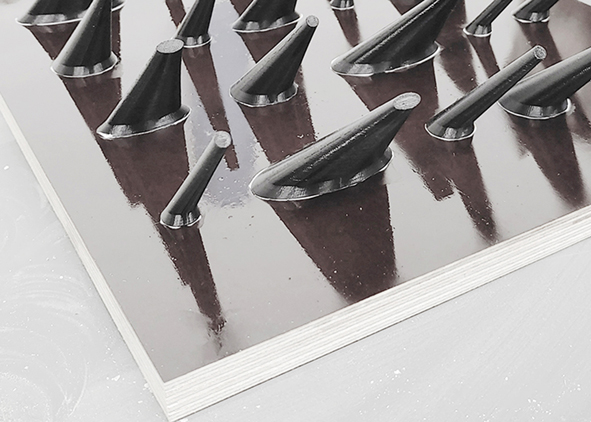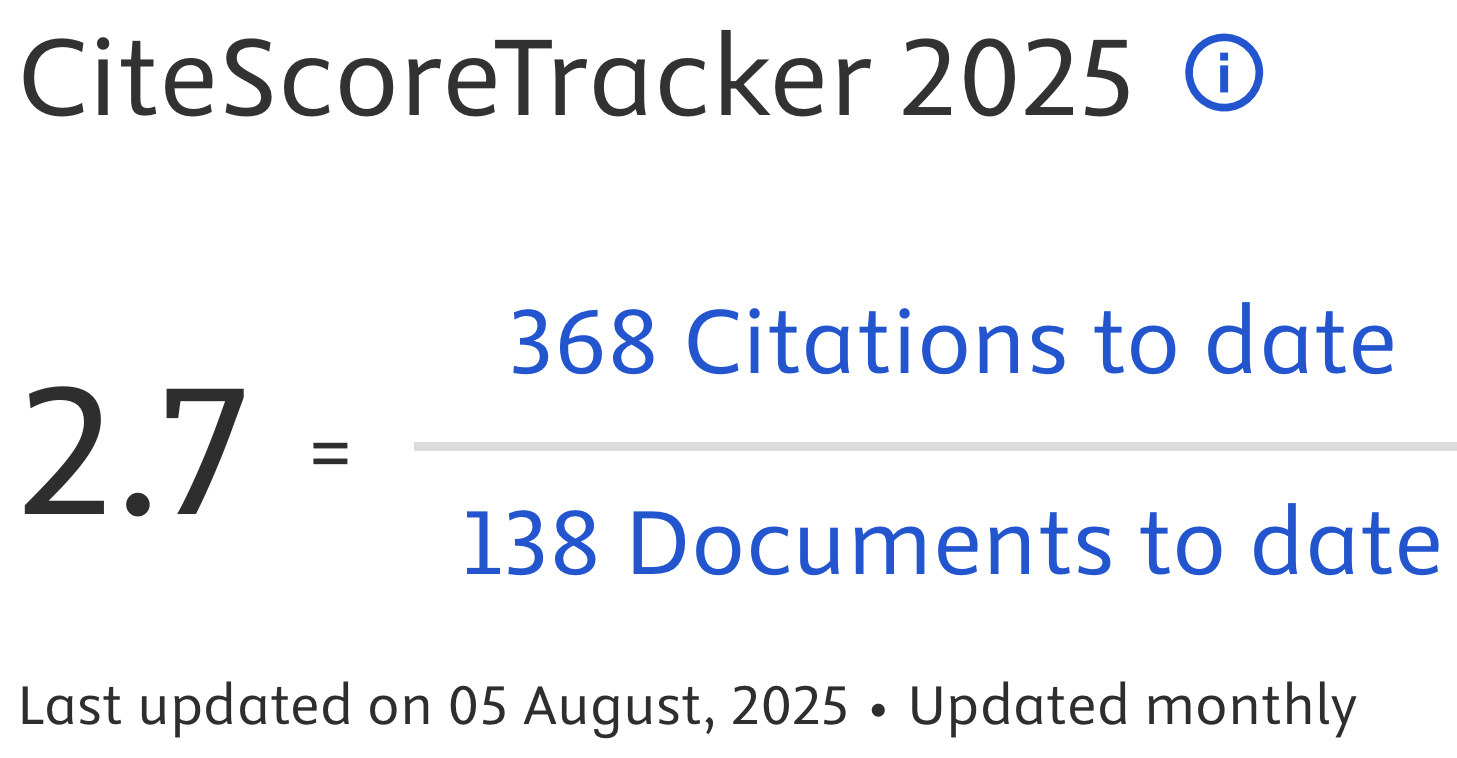Botanical concrete. Experimentation on concrete substrates for vertical greening
DOI:
https://doi.org/10.19229/2464-9309/11242022Keywords:
vertical greening, concrete substrate, living concrete, green infrastructure, bio-receptivityAbstract
Botanical Concrete collaboratively investigates a fundamentally new approach to wall-based vertical greening systems, based on design thinking, materials research and phytotechnology, to functionalize concrete and allow the permanent establishment of cryptogams and tracheophytes on its surface, two species with different substrate demands requiring two different sets of parameters for functionalisation. Combining the results of research into cryptogams and tracheophytes produces a novel, resource-conserving approach to vertical greening, able to take advantage of the impermeable surfaces commonly found in built space to establish vegetation, improve local microclimates, increase urban biodiversity, and create new biotopes.
Downloads
Article Metrics Graph
References
Brandes, D. (2013), “Mauern als Lebensraum für Pflanzen”, in Siegesmund, S. and Snethlage, R. (eds), Naturstein in der Kulturlandschaft, Mitteldeutscher Verlag, Halle (Saale), pp. 96-106. [Online] Available at: doi.org/10.24355/dbbs.084-201309121035-0 [Accessed 22 March 2022].
Brandes, S. and Brandes, D. (2010), Mauerflora in Dörfern des nördlichen Harzvorlandes (Sachsen-Anhalt) | Wall flora of villages in the northern foreland of the Harz mountains (Sachsen-Anhalt), Institut für Pflanzenbiologie, pp. 1-14. [Online] Available at: digibib.tu-bs.de/?docid=00032636 [Accessed 22 March 2022].
Büscher, L. (2018), “Beton als vertikaler Lebensraum für Pflanzen – Vom gestalterischen Potenzial des Werkstoffs”, in Stadt und Grün | Das Gartenamt, issue 05, pp. 45-50.
Deilami, K., Kamruzzaman, M. and Liu, Y. (2018), “Urban heat island effect – A systematic review of spatio-temporal factors, data, methods, and mitigation measures”, in International Journal of Applied Earth Observation and Geoinformation, vol. 67, pp. 30-42. [Online] Available at: doi.org/10.1016/j.jag.2017.12.009 [Accessed 22 March 2022].
Eppel, J. (2018), “Grüne Klimafassade – Utopie und Wirklichkeit”, Neue Landschaft, issue 11, pp. 31-36.
FLL – Forschungsgesellschaft Landschaftsentwicklung Landschaftsbau (2018), Fassadenbegrünungsrichtlinien – Richtlinien für Planung, Bau und Instandhaltung von Fassadenbegrünungen, FLL, Bonn.
Gausmann, P. and Rosin, R. (2014), “Flora und Vegetation der Mauern in den Stadtgebieten von Herne, Bochum, Hattingen und Witten (Ruhrgebiet, Nordrhein-Westfalen) unter besonderer Berücksichtigung der Farnpflanzen”, in Veröffentlichungen des Bochumer Botanischen Vereins, vol. 6, issue 3, pp. 13-33. [Online] Available at: botanik-bochum.de/publ/OVBBV6_3_Gausmann_Rosin_Mauern.pdf [Accessed 22 March 2022].
Magistrat der Stadt Wien (2019), Fassaden & Vertikalbegrünung – Internationale & nationale Best-Practice-Beispiele. [Online] Available at: wien.gv.at/stadtentwicklung/studien/pdf/e000037.pdf [Accessed 22 March 2022].
Manso Blanco, S. (2014), Bioreceptivity optimisation of concrete substratum to stimulate biological colonisation, PhD thesis, Universitat Politècnica de Catalunya. [Online] Available at: researchgate.net/publication/262938554_ Bioreceptivity_Optimisation_of_Concrete_Substratum_to_Stimulate_ Biological_Colonisation [Accessed 22 March 2022].
Manso, M., Teotónio, I., Silva, C. M. and Cruz, C. O. (2021), “Green roof and green wall benefits and costs – A review of the quantitative evidence”, in Renewable and Sustainable Energy Reviews, vol. 135, pp. 110-111. [Online] Available at: doi.org/10.1016/j.rser.2020.110111 [Accessed 22 March 2022].
McDonald, R. I. et alii, (2020), “Research gaps in knowledge of the impact of urban growth on biodiversity”, in Nature Sustainability, vol, 3, issue 1, pp. 16-24. [Online] Available at: doi.org/10.1038/s41893-019-0436-6 [Accessed 22 March 2022].
Ottelé, M. (2011), The green building envelope – Vertical greening, PhD thesis, Technische Universiteit Delft. [Online] Available at: repository.tudelft.nl/islandora/object/uuid:1e38e393-ca5c-45af-a4fe-31496195b88d [Accessed 22 March 2022].
Polster, R., Büscher, L., Riehl, W. and Klussmann, H. (2020), “Botanical concrete – Novel composites for urban greening”, in Leopold, C., Robeller, C. and Weber, U. (eds), Research culture in architecture – Cross-disciplinary collaboration, Birkhäuser, Basel, pp. 265-274. [Online] Available at: doi.org/10.1515/9783035620238 [Accessed 22 March 2022].
Polster, R. and Klussmann, H. (2019), “Moos auf Beton – BryoCrete”, in Beton Bauteile 2020 – Entwerfen Planen Ausführen, Bauverlag, Gütersloh, pp. 196-202.
Respyre (n.d.), “Technology”, in gorespyre.com. [Online] Available at: gorespyre.com/our-technology/ [Accessed 22 March 2022].
Riley, B. (2017), “The state of the art of living walls – Lessons learned”, in Building and Environment, vol. 114, pp. 219-232. [Online] Available at: doi.org/10.1016/j.buildenv.2016.12.016 [Accessed 22 March 2022].
Riley, B., de Larrard, F., Malécot, V., Dubois-Brugger, I., Lequay, H. and Lecomte, G. (2019), “Living concrete – Democratizing living walls”, in Science of the Total Environment, vol. 673, pp. 281-295. [Online] Available at: doi.org/10.1016/j.scitotenv.2019.04.065 [Accessed 22 March 2022].
Statistisches Bundesamt (2016), “Indikator Flächeninanspruchnahme – Anstieg der Siedlungs- und Verkehrsfläche”, in Land- und Forstwirtschaft, Fischerei – Bodenfläche nach Art der tatsächlichen Nutzung, Fachserie 3 Reihe 5.1, Statistisches Bundesamt, Wiesbaden. [Online] Available at: statistischebibliothek.de/mir/servlets/MCRFileNodeServlet/DEHeft_ derivate_00029318/2030510157004.pdf [Accessed 22 March 2022].
Takano, T., Nakamura, K. and Watanabe, M. (2002), “Urban residential environments and senior citizens’ longevity in megacity areas – The importance of walkable green spaces”, in Journal of Epidemiology Community Health, vol. 56, pp. 913-918. [Online] Available at: doi.org/10.1136/jech.56.12.913 [Accessed 22 March 2022].
UCL (n.d.), “Building greener cities with poikilohydric living walls”, in ucl.ac.uk. [Online] Available at: ucl.ac.uk/bartlett/architecture/about-us/innovation-enterprise/building-greener-cities-poikilohydric-living-walls [Accessed 22 March 2022].
Veeger, M., Ottelé, M. and Prieto, A. (2021), “Making bioreceptive concrete – Formulation and testing of bioreceptive concrete mixtures”, in Journal of Building Engineering, vol. 44, art. 102545, pp. 1-20. [Online] Available at: doi.org/10.1016/j.jobe.2021.102545 [Accessed 22 March 2022].
Veeger, M., Prieto, A. and Ottelé, M. (2021), “Exploring the possibility of using bioreceptive concrete in building façades”, in Journal of Facade Design and Engineering, vol. 9, issue 1, pp. 73-86. [Online] Available at: doi.org/10.7480/jfde.2021.1.5527 [Accessed 22 March 2022].
Wong, N. H., Tan, C. L., Kolokotsa, D. D. and Takebayashi, H. (2021), “Greenery as a mitigation and adaptation strategy to urban heat”, in Nature Reviews Earth & Environment, vol. 2, issue 3, pp. 166-181. [Online] Available at: nature.com/articles/s43017-020-00129-5?proof=t%29 [Accessed 22 March 2022].
Ysebaert, T., Koch, K., Samson, R. and Denys, S. (2021), “Green walls for mitigating urban particulate matter pollution – A review”, in Urban Forestry & Urban Greening, vol. 59, art. 127014, pp. 1-13. [Online] Available at: doi.org/10.1016/j.ufug.2021.127014 [Accessed 22 March 2022].

Downloads
Published
How to Cite
Issue
Section
License
This Journal is published under Creative Commons Attribution Licence 4.0 (CC-BY).
License scheme | Legal code
This License allows anyone to:
Share: copy and redistribute the material in any medium or format.
Adapt: remix, transform, and build upon the material for any purpose, even commercially.
Under the following terms
Attribution: Users must give appropriate credit, provide a link to the license, and indicate if changes were made; users may do so in any reasonable manner, but not in any way that suggests the licensor endorses them or their use.
No additional restrictions: Users may not apply legal terms or technological measures that legally restrict others from doing anything the license permits.
Notices
Users do not have to comply with the license for elements of the material in the public domain or where your use is permitted by an applicable exception or limitation.
No warranties are given. The license may not give users all of the permissions necessary for their intended use. For example, other rights such as publicity, privacy, or moral rights may limit how you use the material.


















































































